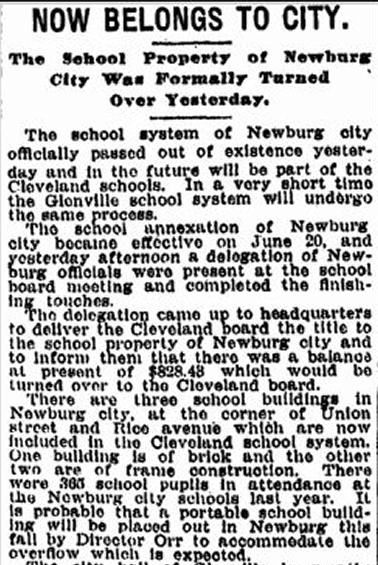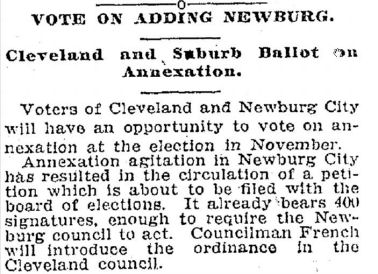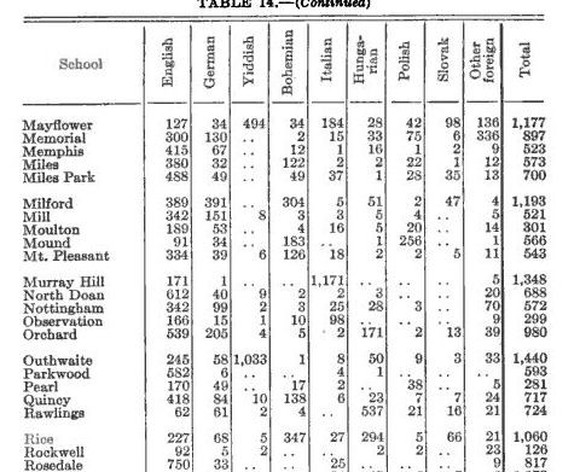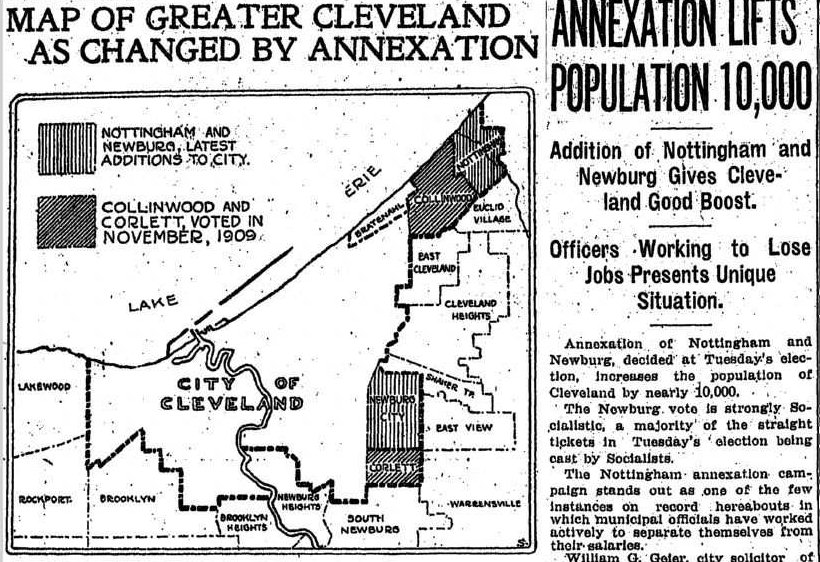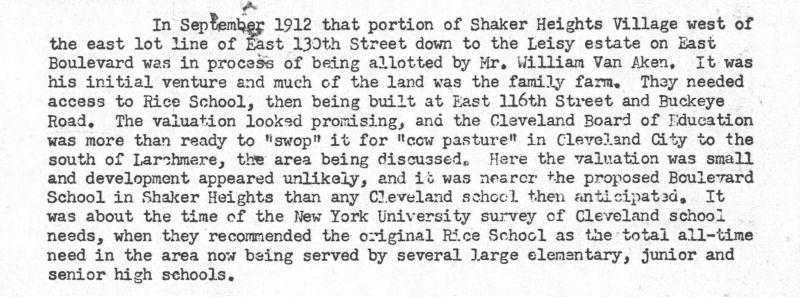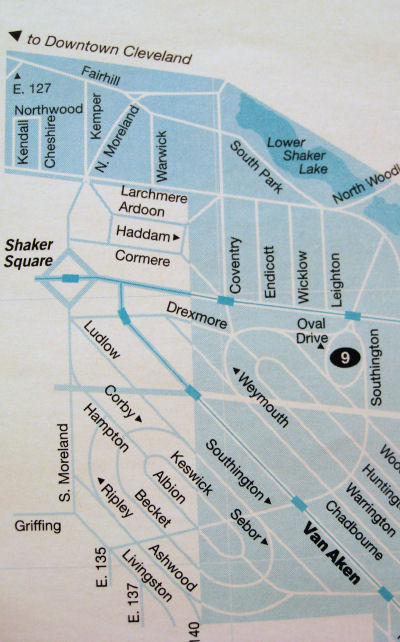|
|
||
|
Shaker Square and
the Shaker
Schools
|
||
|
|||
|
Newburg City At the time of the 1912 agreement, what would become the Shaker Square area was in Newburg City. Under an arrangement made in 1905. Newburg City children attended Cleveland schools. Newburg City paid tuition for its children.
Newburg City was moving to being annexed to Cleveland. It would be approved in the November 1912 election with 90 percent voting for annexation. That made the Shaker Square area part of Cleveland.
Harvey Rice Elementary School
|
|||
|
Source: a picture postcard at Cleveland Memory CSU Cleveland's Harvey Rice Elementary School opened in December 1904 at East 116th Street and Buckeye Road, which was then nearly a mile east of the city border. It had only eight rooms. one per grade level. The school was enlarged twice because of the rapid growth in Cleveland's population and in 1905 taking on the education of Newburg City's children. By 1912 it was within Cleveland's city limits and could enroll more than 1,000 students. The old Rice Elementary was demolished in 2007. In 2009 a new Rice Elementary School opened at East 116th and Shaker Boulevard (CMSD website)
The school's name honors
Harvey Rice (1800 - 1891) who helped create Ohio's
public education system.
|
|||
Language spoken at home, Cleveland students,
by school.
Source: Google book In 1916 the Cleveland Foundation published a study of the Cleveland public schools, directed by Leonard Ayres Ph.D. The table shows Rice Elementary School, whose 1,060 students made it one of Cleveland's largest, with nearly 80 percent of its students from homes where English was not the primary language. Bohemian (Czech) and Hungarian (Magyar) were the leading languages spoken. Our pages of 1910 US Census data for the western end of Shaker Village confirm this finding for the parental country of origin. |
|||
|
September 4, 1912 Areas being exchanged have equal tax valuations On September 4, 1912, five days before it approved the resolution exchanging school areas with Cleveland, the Shaker Heights Board of Education met. Mr. John L. Cannon, a Village trustee who was also an attorney for the Van Sweringens, reported that the tax valuation of the area the Shaker Heights schools would be giving to the Cleveland school district was $308,200. Though the Shaker Square area was farmland, there must have been developments nearby, as he also reported that the tax valuation of the area they would get from the Cleveland school district was $309,790. Thus, neither district's tax valuation would be affected by the exchange.
The minutes also recorded the hiring of the
Shaker Heights Village school's
teachers for 1912-13:
|
|||
|
September 9, 1912
"Shaker
Square and the Shaker Schools"
by Virginia Dawson, PhD, explains what led to
the agreement made on September 9, 1912 between
the Shaker Heights Board of Education and the
Board of Education of the Cleveland City
School District. She has furnished the text of that
agreement, which we display below. Source:
Archives of the Shaker Heights Board of
Education.
|
|||
|
November 1912 Cleveland grows through annexation
November 8, 1912 Plain Dealer
This story appeared two
days after election day in 1912. Already the
nation's sixth-largest city, Cleveland was growing
rapidly. It had good schools, good government (Mayor
Tom L. Johnson, followed by Newton D. Baker), many
street-car lines, a municipal water system, and the
financial strength to sell bonds to fund road
building and sewers. Smaller suburbs adjacent to
Cleveland were voting to annex themselves to
Cleveland. In Newburgh City the vote was 90 percent
in favor of annexation. |
|||
|
1953 John W Main's letter about the 1912 agreement
John W. Main had been Clerk-Treasurer of the Shaker Heights
Schools since 1920.
In
1953 School Board members asked him how
the arrangement had come about He
replied in a letter dated January
30, 1953. This previously
unpublished document, which explains the
essence of the 1912 agreement, was found by
Virginia Dawson in the course of her research.
Source: local history collection of the Shaker Heights Public Library
|
|||
|
Today's streets
affected by the 1912 agreement This northwest section of a map of the Shaker Heights City School District shows Shaker Heights in light blue and the area in the City of Cleveland in off-white.
Source: City of Shaker Heights |
